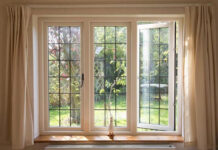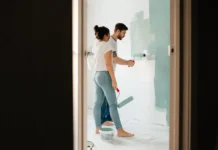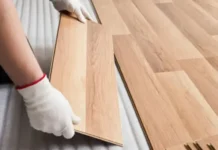Stucco is a time-honored building material that has made appearances across the globe. It has gained a great deal of acclaim for its durability, aesthetic appeal, and versatility. It’s popular for both residential and commercial projects and can be used on buildings, hardscapes, and many other structures. Consider some of the important details surrounding this popular exterior finish and why it’s the perfect choice for many types of projects.
Taking a Closer Look at Stucco
Composed of cement, sand, and water, stucco offers numerous advantages that make it a popular choice for residential and commercial construction projects. It’s applied in multiple layers via numerous steps. In the end, it creates a durable, weather-resistant, and aesthetically pleasing finish as long as the stucco installation process is carried out properly by qualified professionals.
Different types of stucco are available these days. Traditional stucco is the oldest option, and it remains one of the most popular. After all, it has endured the test of time and proven its worth in various applications. This is the type of stucco that’s made of cement, sand, and water.
Another option is acrylic stucco. It’s composed of polymers that give it more strength and flexibility. There’s also synthetic stucco. It can be made of various man-made components and often entails the use of foam board insulation. In some cases, it offers a more energy efficient alternative to its counterparts.
Why Choose Stucco for a Home or Business?
With so many building materials now available, choosing the right one isn’t always easy. Each type of material has its own list of benefits and disadvantages. Each one also creates a unique appearance. When it comes to surface materials, though, stucco is one of the most popular. It offers a variety of advantages for home and business owners. Consider some of the benefits stucco has to offer.
Aesthetic Appeal
One of stucco’s main advantages is its appearance. If applied correctly, it creates a lovely finish that melds well with several architectural styles and design themes. It can create an air of charm or elegance and works with both rustic and modern designs. Through various application methods, it’s possible to achieve different textures and appearances as well. On top of that, it comes in different hues for even more beauty and curb appeal. Because of all those attributes, many people name stucco as their surface finish of choice.
Versatility
Stucco is also an incredibly versatile material. As noted, it comes in an array of colors. Though beige and pink tones are among the most popular choices, it’s also available in various shades of brown, blue, and green. Its previously mentioned textural variations also come into play here. It can be applied in different ways to achieve different appearances.
Furthermore, stucco can be used in a range of ways. It’s often used on the surfaces of homes and businesses, but that’s only one of its potential applications. It can be applied to storage sheds, pool houses, ADUs, privacy and security fences, retaining walls, and many other structures and hardscapes. Additionally, it can be used alongside other materials for added variation. Whether people want to create a uniform look on their properties or use textures in different ways to add interest and visual appeal, stucco may just be the solution they’re looking for.
Beneath the Surface
Many people are quick to argue that beauty is only skin deep. It’s what’s underneath that counts. That truth can certainly apply to building materials because no matter how attractive they are, if they don’t have other advantages to offer, their surface appearance is essentially a moot point. Fortunately, stucco offers a number of benefits that go well beyond its outward appearance.
Durability
Stucco offers impressive durability when compared to some other building materials and surface applications. It’s capable of withstanding high winds, impacts from flying debris, excessive moisture, extreme temperatures, and other hazards. It’s also resistant to fire.
As such, it can protect properties and hold up in many climates where other materials might fall flat. Keep in mind, though, its strength and durability largely depend on the experience, expertise, and craftsmanship of the contractors who install it. If it’s not properly applied, it can succumb to the elements, bringing about the need for extensive and costly repairs.
Longevity
Due to its durability, stucco can last for quite some time. In fact, some reports indicate it can last for up to 80 years without needing to be replaced. Again, though, the quality of the builders installing it and the materials used in its creation can either detract from or contribute to its lasting nature.
With proper application and under ideal conditions, stucco may even outlast some of the materials it’s applied to. Of course, it can also protect underlying materials, making them last even longer than they would otherwise. All that can save property owners quite a bit of money in repair and replacement costs in the long run.
Little Maintenance Required
Stucco requires little ongoing maintenance. It doesn’t need to be sealed or painted at regular intervals. It won’t decay when exposed to moisture, and it won’t warp when temperatures transition from hot to cold or vice versa.
Additionally, it’s not vulnerable to termites or other pests. Common pests can’t damage stucco, and it may even provide an effective safeguard from pests for the materials it’s applied to. All that further increases its longevity and long-term value and ensures it’ll maintain its attractive appearance for decades. Regular cleanings with mild detergent are all it needs to stay beautiful and functional.
Added Energy Efficiency
Energy efficiency is a key factor for property owners to consider these days. Not all materials are capable of meeting people’s diverse needs and expectations, but stucco is one of the exceptions to this issue. It can boost a structure’s energy efficiency due to its natural insulative properties. It can reduce heat transfer, thereby lowering heating and cooling costs.
When combined with other measures, such as adequate insulation and effective seals around windows and doors, it can be a great ally in the quest for greater energy efficiency. That’s another way stucco can save property owners money. At the same time, its capacity to improve energy efficiency can make homes and businesses more comfortable and reduce wear and tear on HVAC systems.
Raising Property Values
In light of all those benefits, stucco can also bring about increased property values. From its appearance and longevity to its energy efficiency and lack of maintenance needs, many potential buyers choose homes covered in stucco over other alternatives. They’re aware of the advantages stucco has to offer, and they’re eager to leverage those in their own favor. Plenty can be said for a material that attracts buyers while asking so little in return.
Delving into the Stucco Installation Process
As mentioned earlier, stucco needs to be properly installed using specific steps. If not, it won’t last very long, and it won’t provide all the benefits it’s known for. Take a look at the following overview of the stucco installation process.
Getting Ready for Installation
First, it’s important to properly prepare surfaces before beginning the installation process. The underlying building materials must be clean and free of dirt, peeling paint, and other problems that could affect the finished product. If there are any cracks, holes, or other types of damage present, those need to be repaired before applying a stucco finish.
Installing a Moisture Barrier
Without appropriate measures in place, stucco can be particularly vulnerable to moisture. Standing water and moisture that doesn’t dry quickly or completely can cause stucco to crack and crumble. Because of that, a moisture-resistant barrier needs to be installed before applying stucco. That’ll help to improve its longevity and durability and pave the way for the next steps of the installation process.
Adding the Scratch Coat
With a moisture barrier in place, it’s time to apply the scratch coat. This layer generally consists of water, lime, sand, and Portland cement. It’s a rough, ridged layer of material that should be approximately half an inch thick. It’ll bond to the next layer, which is usually a wire mesh. The scratch coat and mesh create a durable, solid foundation for a stucco finish.
Putting on the Brown Coat
After applying the scratch coat and allowing it to harden, contractors apply the brown coat. This layer is typically made of sand and cement, and it’s approximately the same thickness as the scratch coat. While the scratch coat needs to be rough, the brown coat should be smooth and even. It, too, needs to harden before proceeding to the next step. If it doesn’t cure properly, the structural integrity of the stucco could suffer.
Putting on the Finish Coat
Finally, contractors apply the finish coat. That’s the layer that will provide the final color and texture of a stucco surface. Different textures can be created using various application techniques. Stucco can be smooth, but that’s only one option. Sand and dash finishes are also available. Both appear grainy though the latter is usually a bit coarser and rougher than the former.
Skip-trowel finishes, also known as lace finishes, are a bit more elegant in appearance. A worm finish features swirls whereas a cat face finish is mainly smooth with strategically placed rough patches throughout. There’s also the Santa Barbara finish that’s essentially a middle ground between the smooth and sand finishes. Those are only a few of the options available to homeowners.
Getting the Most Value from a Stucco Finish
While stucco offers numerous benefits, proper installation is crucial to making the most of those advantages. Periodic inspections should also be performed to ensure the stucco finish is holding up as expected. If installed correctly, stucco can provide durability, longevity, versatility, energy efficiency, aesthetic appeal, and many other valuable perks.
Read Also: 4 Simple Reasons Why Choosing Oiled Wood Flooring is Right For Your Home



































































